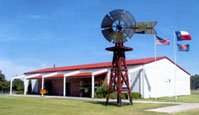|
April 26, 2020
WOLF CREEK HERITAGE MUSEUM NOTES by Virginia Scott MUSEUM HAPPENINGS I AM coming in to check email and mail and cleaning my desk ( not going well) . I am offering the following article from the Oklahoma Rural News ,October 1975: "The cowboy of the Old West really only existed for about 40 or 50 years, from the end of the Civil War to the beginning of the 20th Century. Longhorns, or "critters" as they were called by their owners and handlers, had the ability to stay alive on lands that would leave their English cousins, the Herefords and Angus , bawling for supper. At first, no one owned these animals, so the man who branded them was the man who drove them to market and sold them. Many a Texas mogul got his start "moonshining" cattle. It took a tough breed of man to catch the wily Longhorns and lay a branding iron on them at night. And cowboys were tough. The term "cowboy" was used for the 12-to-15 year-olds who were employed to drive the cattle to market after they were herded out of the mesquite. Young boys were used because they worked cheap, often, for as little as food plus $5 a month./ The gaunt Longhorns, virtually worthless as meat animals, were valued more for their hides, horns, hooves and tallow. Few cattlemen could afford to pay grown men $25 to $30 a month to drive cattle to market. … The cowboy usually furnished his own saddle , bridle and bedroom, while his employer furnished everything else, including horses. "Night hawks" earned $20 or $25 a month with top hands commanding $50 or $60. While feeding hardworking cowboys may have been quite an expense for some employers, no cattleman ever went broke meeting his employees' demands for soap. In more ways than one, the cowboy had a unique air about him. The cowboy both created and lived the legend of the Old West. He is to us what the knights of old are the English." This article ended with the following sentence "We'll never see the likes again of the uniquely American cowboy." They need to visit our area of the panhandle when the local ranches are branding and shipping. We have a great view of this happening from the front porch of the museum. Stay safe !!! |
 |
© 2006 - 2025 Wolf Creek Heritage Museum
All Rights Reserved |


